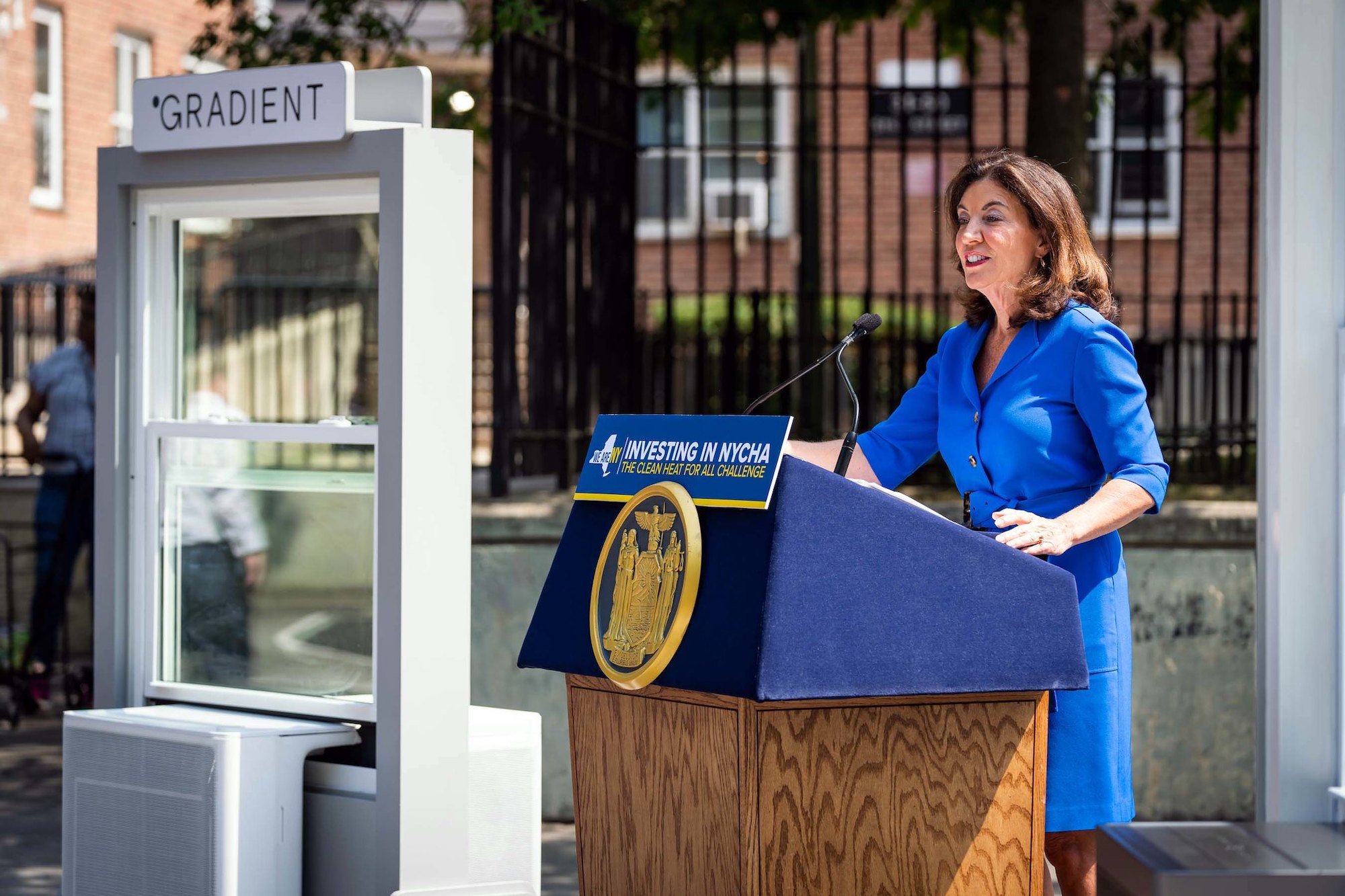
The United States Steps Up on Climate
How US policy finally moved the needle on climate action this year.
When it comes to passing policy to address climate change with clean energy solutions, it has been a transformative year. From the federal to the state to the local level, US ambition was at an all-time high. Between historic levels of funding from the federal government and growing ambition at the local level, here are RMI’s major takeaways:
1. The United States Put its Money Where its Mouth is
The US delivered the biggest investment in climate and clean energy solutions in history when it passed the Inflation Reduction Act this year. If implemented by states, local governments, and companies in full force, the legislation will fundamentally transform the American economy — creating new clean energy and technology jobs, lowering costs on energy bills, and giving the United States the ability to cut emissions by up to 52 percent.
Already, states, companies, and localities are rushing to take advantage of the robust incentives in the legislation — and we expect to see this greatly accelerate in the new year.
- RMI analysis has consistently shown that clean energy financial incentives will save Americans money on their utility bills, transportation, and everyday costs by strengthening the American supply chain. The efforts to make low-carbon technology cheaper and more accessible are boosted by funding from the CHIPS and Science Act, which also passed this year.
- See some of our analysis in the Washington Post: “How the climate bill could save you money and change what you buy.”

2. States Stepped up
RMI’s state scorecards showed the climate goal progress of front-runner US states: California, Colorado, Illinois, New Jersey, New York, and Washington. These six states all have ambitious plans to tackle climate change and, if they are successful, will have a significant dent on US emissions. Together, they make up 20 percent of overall US emissions. Since the publishing of RMI’s analysis, these states made major progress in advancing their climate and clean energy plans in 2022, including:
- Washington passed the strongest building code policies in the country, which will ensure new homes and commercial buildings are built with electric heat pumps.
- Colorado passed a suite of clean energy legislation, including investments in transportation electrification like e-bikes and electric school buses, efforts to reduce pollution from the state’s biggest industries, and more.
- Chicago, Illinois, passed an ordinance that requires new buildings to be wired to support electric heaters and appliances — an effort that could be replicated in many other Illinois towns and cities if the state adopts a “stretch code” in 2023.
- California became the first state to commit to phasing out the sale of gas-powered heaters and furnaces by 2030. This progresses the state’s leadership in addressing emissions in buildings and homes to improve health and air quality and reach climate goals.
- New Jersey significantly upped its clean energy ambition when Governor Murphy announced the state would increase its offshore wind from 7,500 to 11,000 megawatts. That’s enough to power almost 10 million homes.
- New York Governor Hochul and NYC Mayor Adams announced an initial $70 million investment in the development and production of 30,000 new heat pump units for use in New York City Public Housing facilities.
3. We Saw—and Continue to See —Investment in Clean Energy Across Political Parties
With $370 billion of Inflation Reduction Act funding now on the table to invest in clean energy and climate mitigation projects, the United States has experienced a wave of new clean energy and technology factory announcements, the beginnings of manufacturing revival in America’s Midwest, and unlikely political partnerships aimed at capitalizing on the clean energy opportunity.
From politically red states like Ohio, to bipartisan coalitions of governors, to states like Michigan breathing life into new climate action plans, the energy transition is already happening and proving that benefits extend far beyond climate mitigation.
Looking Ahead
Next year, there will be major opportunities for meaningful climate action, deployment of more clean energy projects, and new ways for Americans to save money while reducing their carbon footprints. Thanks to the Inflation Reduction Act, historic levels of tax credits and discounts will come online. Households and energy utilities can build and use solar, wind, and other clean sources of energy at lower costs. Americans will be able to switch from gas-powered to electric vehicles at a discount, which will help avoid the volatile gas prices that have defined the past couple of years. Industries will be able to apply for manufacturing tax credits to build new and cheaper clean energy storage systems and batteries — which will strengthen our domestic supply chains and reduce energy and everyday costs over time.
On top of all of the federal incentives, several governors and local government officials who made strong climate commitments will come into office this January. And though there is a long way to go in fully reaching our climate goals, the level of ambition and opportunity is reason to be optimistic and compel our policymakers to take advantage of these next decisive years.